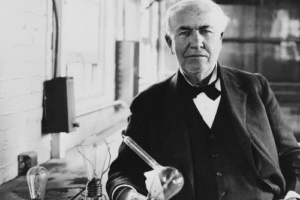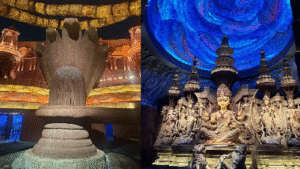The Hauz Khas Metro Station is a prominent underground station on two lines of the Delhi Metro system, specifically on the Magenta Line and the Yellow Line. Located in South Delhi, it is known for being the deepest metro station in the entire Delhi Metro network, reaching a depth of 32 meters (105 feet) below ground level.
Hauz Khas is located in a prominent area of South Delhi, near the Hauz Khas Complex, which is an area rich in history and culture, with landmarks like the Hauz Khas Village, Hauz Khas Fort, and Hauz Khas Lake.
The station is a key part of both the Yellow Line (Line 2) and the Magenta Line (Line 8), providing commuters access to two significant parts of the city.
At a depth of 32 meters, Hauz Khas Station holds the record as the deepest station in the Delhi Metro network. The construction of such a deep underground station posed several engineering challenges, including the management of groundwater levels, structural stability, and accessibility.
The design and construction of the station are considered an engineering feat. The station’s depth is a result of the local topography and the need to avoid interference with surface-level structures and residential areas.
The station’s design incorporates modern architectural elements and a focus on safety, with robust support structures and well-designed escape routes in case of emergencies.
Special attention was given to ventilation and lighting, making the deep station feel spacious and well-illuminated despite its subterranean location.
Escalators and elevators are installed to ensure easy access to the station from street level, allowing commuters to move efficiently between the different levels.
Hauz Khas Metro Station serves as a major interchange station, with direct access to two of the busiest metro lines in Delhi. Commuters can easily switch between the Yellow Line (connecting areas like Jahangirpuri and Huda City Centre) and the Magenta Line (connecting areas like Janakpuri West and Botanical Garden).
The station is strategically located close to the Hauz Khas Village, an area known for its bustling cafes, shops, and cultural landmarks, making it a convenient stop for both commuters and tourists.
Being located in a central and well-connected part of the city, Hauz Khas Metro Station serves thousands of passengers daily, offering a crucial transit hub for both locals and visitors.
Its deep underground nature also allows for efficient use of space in the densely populated area of South Delhi, where surface-level space is limited.
The station has been designed to reflect the modern, sleek aesthetic of the Delhi Metro system. Its layout prioritizes efficiency and comfort for passengers, with clear signage and clean interiors.
The architecture of the station blends contemporary design with practical features for the safety and convenience of metro users.
As the deepest station, Hauz Khas stands out in terms of its depth, making it a notable engineering landmark in the Delhi Metro’s development. It highlights the advancements in metro system construction, particularly in managing deep underground spaces.
The station is also a testament to the expansion of the Delhi Metro network, which aims to provide efficient and convenient transportation across the city, especially in areas with limited surface space.
The station plays a key role in the ongoing growth and expansion of the Delhi Metro network. It ensures seamless connectivity for passengers traveling between various parts of the city, reducing the burden on road traffic and offering an eco-friendly mode of transport.
As the city continues to expand, Hauz Khas Metro Station will remain a vital part of the metro network’s infrastructure.
The Hauz Khas Metro Station is a significant part of the Delhi Metro system, known for its depth and engineering excellence. Its location, functionality, and design make it a key transit hub in the city, ensuring efficient connectivity and serving as a vital link for commuters. The station is a fine example of modern urban transportation infrastructure, offering comfort, accessibility, and safety to its passengers.







